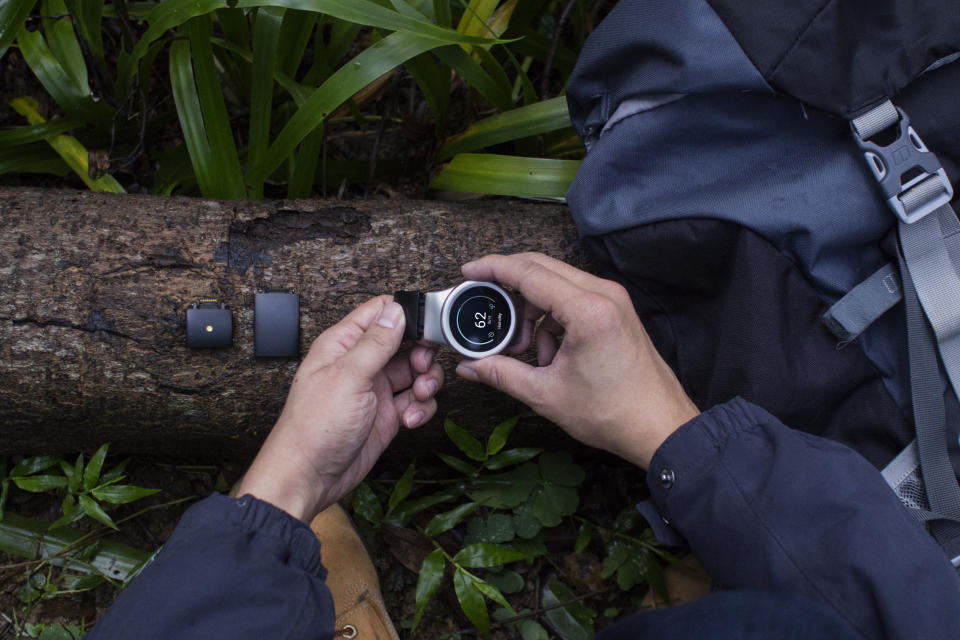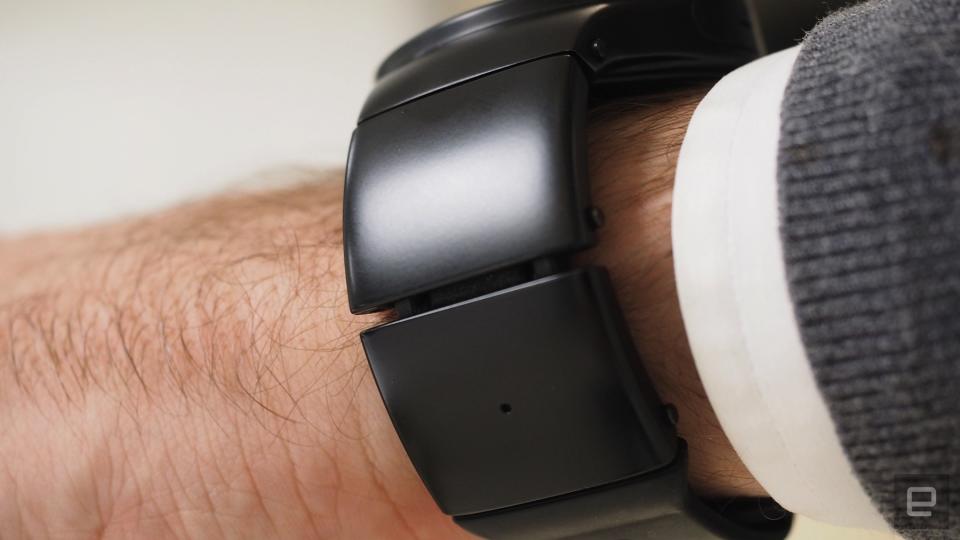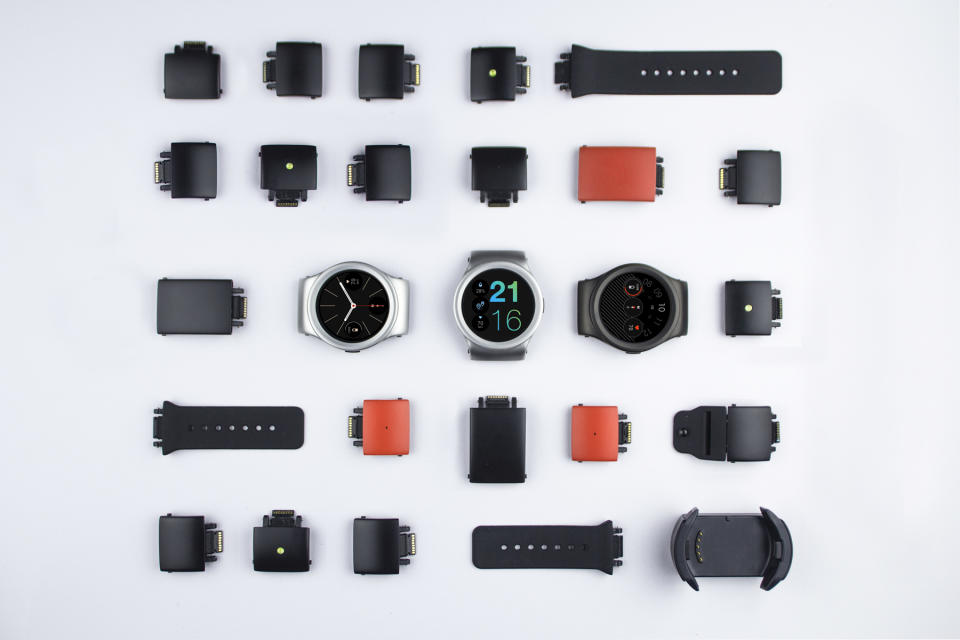The Blocks modular smartwatch will always be a concept
The hardware is now ready, so it's all about what's next.
It's been several years since Blocks had its initial 15 minutes of fame, capturing the internet's attention with the idea of a modular smartwatch. The first prototypes were about as rough and ready as they could feasibly get, but the public's appetite for the ambitious product hadn't waned by the time the crowdfunding campaign started over a year later. More than $1.6 million in pledges and another few years of development, and the Blocks smartwatch is kinda, finally here. But so much has changed in the interim. Project Ara is dead, modularity isn't the buzzword it once was and we've gone from not knowing if we really need a smartphone accessory on our wrist to a saturated smartwatch market. But the founding fathers of Blocks still believe they have something unique to offer.
It's at CES 2018, the biggest tech show of the year, that Blocks hopes to generate a renewed interest in its vision. The startup does actually have some news to share, too. It shipped its first "beta" units to the most fervent of Kickstarter backers in 2017. But sub-par manufacturing caused Blocks to seek a new partner, and at the same time, they switched from a Qualcomm chipset to the faster-clocked, quad-core MediaTek 6580M platform -- restrictive and expensive licensing conditions inspired that particular move, I'm told. But now the product is up to scratch, and how the Blocks team first envisioned it. It is on track to deliver to all crowdfunding backers and to start shipping retailer pre-orders within the next few months. So, CES is being treated by them as, finally, the launch of Blocks.
The team is also currently working on updating the smartwatch OS to Android 8.0 Oreo, so customers can be treated to a faster, more battery-efficient software experience soon after receiving their device. The Blocks OS was originally developed by a company called Cronologics, helmed by ex-Googlers who built smartwatch software with regular Android as the backbone (Alexa support being one of their highlighted achievements). Android Wear, which the big G was focused on, didn't allow the hardware access the Blocks team needed, modular components being key to the product and all. A little over a year ago, Cronologics was acquired by Google, bringing those rogue staff full circle and leaving Blocks to take over development.

The hardware itself was always the main USP of Blocks, though. While the core, as the team calls it, houses the brain, AMOLED touchscreen, battery, speaker and a few other key components, it's the links that form the strap that provide all additional functionality. There's a battery module for extra juice, a GPS/GLONASS module, and one that includes temperature, humidity and air-pressure sensors, as well as an altimeter. There's also a heart-rate sensor and an LED-torch module. You can chop and change these, of course, perhaps opting only to attach the battery module and pairing that with a regular watch strap. Customization is great and all, but you can find the functionality these modules offer on countless other smartwatches already.
The Blocks squad is under no illusion they've got the next Apple Watch on their hands, or even close to a mass-market product. Where they think they can fit, however, is in the niches everyone else isn't. The plan is to target very specific use cases and monopolize those customers. The biggest opportunities, they believe, will be with enterprise clients who have no use for an off-the-shelf product. A plant manager might want a smartwatch for workers that can provide precise indoor location information, incorporate a harmful-gas sensor and a panic button. Maybe the watch can identify when a machine operator is tired or stressed and get them to switch out with a co-worker. This is where Blocks, as a hardware platform rather than just a watch, might shine.

Blocks has already had some interesting conversations around custom projects -- even one about building a larger, collar-style device for racing camels that could relay real-time stats and physiological data. The team is developing a vein-recognition module for biometric authentication, an NFC module (hello payments), an air-quality sensor, a perspiration-and-stress monitor and a UV sensor. They are working with Flic, another crowdfunding success, to incorporate their smart button tech into a module, and a company called FlickTek for using Blocks as a gesture-control device.
For Blocks, CES isn't so much a stage for a product launch but an announcement the platform is open for business. Now the core is out the door, the team is hoping to work with anyone and everyone to build new modules and explore new use cases. I'm told it won't be long now until the SDK is matured to the point that developers can easily hack together new prototype links. Blocks wants to partner with companies and universities to bring new sensor tech to the watch, and for firms and academics to come to them with new ideas. And if it makes sense to commercialize, then they can tread that path together.

At the moment, Blocks doesn't really differentiate itself from all the other smartwatch options out there, but now it's about tapping unexplored potential. So even though the hardware the team originally promised is ready for delivery, there is hope, in some ways, that Blocks will always be a concept.
Click here to catch up on the latest news from CES 2018.





























